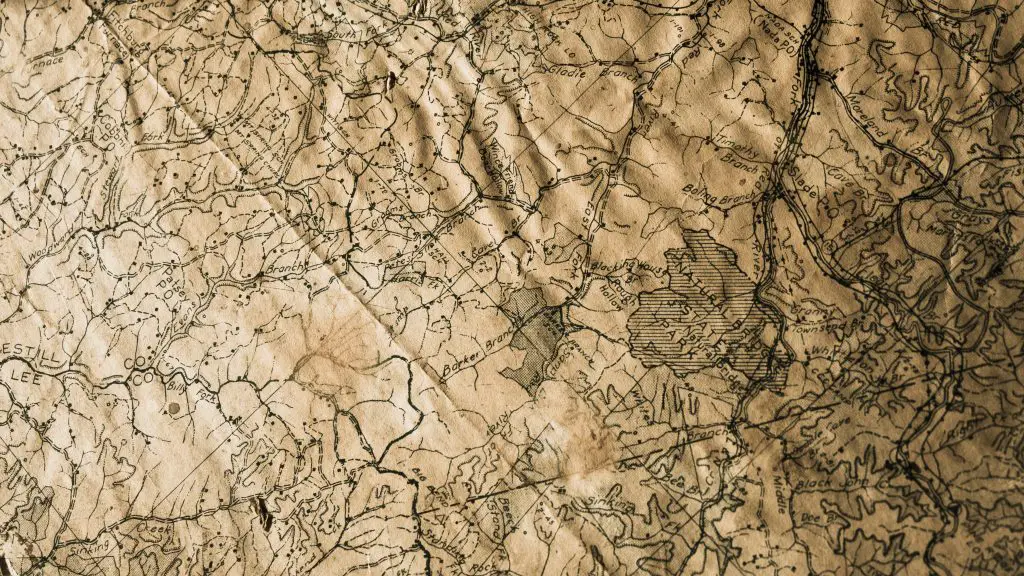Assessing the right sand wedge bounce is critical for a golfer.
When playing on wet sand or dealing with longer rough, you will want to choose a sand wedge that will work well for the situation.
Too many golfers will use the wrong sand wedge bounce and this will ruin their shot. To avoid this, looking at the best sand wedge bounce is essential.
The best sand wedge will depend on the conditions and a golfer’s technique. For softer surfaces such as wet sand, it’s recommended to use a wedge bounce of 14. For harder surfaces, it’s best to use a sand wedge bounce of 10.
Finding a good sand wedge bounce comes down to understanding what’s required over the long term.
This article is going to shed light on the best sand wedge bounce, how to find the right sand wedge bounce, and what pro golfers use.
What Is A Sand Wedge Bounce?
Sand wedge bounce refers to the angle between the trailing edge and the leading edge. This angle can vary with some having a wedge bounce of 10 and others having a wedge bounce of 14.
Golfers are recommended to understand these differences when choosing a good sand wedge bounce for golfing.
With the wedge bounce explained in greater detail, it is going to make a difference as to how the sand wedge impacts the surface under the golf ball.
Benefits Of A Sand Wedge Bounce Of 10
1. Good On Firmer Surfaces
When it is time to look at the advantages of a sand wedge bounce of 10, it’s important to focus on the surface under the golf ball.
Will it be soft or hard?
A harder surface is going to be less forgiving when the sand wedge makes contact with it. This means the sand wedge may bounce up when it hits the harder surface.
To avoid this, a 10-degree wedge bounce is the way to go.
The 10-degree sand wedge bounce is going to ensure the golf club works well on the harder surface and does not become out of control.

2. Good For Shallow Swings
Finding the right bounce also entails focusing on your golf swing.
Some golfers will have what is known as a shallow swing. A shallow swing is going to be a quick, compact swing that is going to look to scoop the ball up.
For a shallower golf swing, you will want to take a look at a sand wedge bounce of 10. This will ensure the swing is optimized for getting the golf ball to go in a straight line as it is hit.
3. Adds More Spin
When looking at the pros of a wedge bounce of 10, you will want to also consider the amount of spin you want out of the sand.
You don’t want it to always go in a straight line.
You might want to put a bit of spin on it and that is where the wedge bounce of 10 will help a lot. It’s possible to put more spin on the sand wedge when you are using a 10-degree sand wedge.
Cons Of A Sand Wedge Bounce Of 10
1. Not Good On Softer Surfaces
When looking at the best sand wedges, you also want to consider the variation in surfaces under the golf ball.
While the wedge bounce of 10 is good on a harder surface, it’s not going to do as well when there is soft sand underneath. It is simply not going to let you scoop the ball up and it is often going to become wayward.
To avoid this, look at going with a softer surface that will yield positive results.
A solution that is not good on softer surfaces is going to lead to a bad score. Keep things simple and make sure you are considering the wedge bounce in greater detail.

2. Strugglers With Longer Rough
When looking at the lob wedge bounce, you also want to focus on the rough.
Is it going to be long or uneven?
In situations such as these, you are not going to get appropriate results with the lower wedge bounce. It is not going to yield good results and you will feel like the golf club is out of control.
You might also end up scooping out too much of the surface along with the shot and that is going to cause it to go off to the side.
Benefits Of A Sand Wedge Bounce Of 14
1. Ideal For Softer Surfaces
When using a wedge bounce of 14, it’s important to only put it to the test with softer surfaces such as soft sand.
Why does it work well with soft sand?
It is going to provide enough of an angle to make sure you are getting the ball out of the soft sand without kicking up too much of the surface. This is when the golf ball is going to go where you want it to.
This is a major benefit with the sand wedge bounce of 14.
A 14-degree sand wedge bounce is going to help with the softer sand and is going to allow you to dictate how the ball moves.
2. Good For Steep Shots
If you are someone that plays more steep shots and have a more pronounced arc as you bring the golf club down, it’s important to move forward with a wedge bounce of 14.
The 14-degree wedge bounce in golf is going to ensure you manage the steeper shot with ease.
The swing is not going to be compromised and you are going to feel in control of the golf ball during this process.
3. Helps With Uneven Rough
It’s also important to think about the rough and whether or not it’s uneven.
Sometimes, a wedge bounce of 14 is going to be mandatory because you will want to manage the uneven rough.
This is where the higher wedge bounce is going to help. You are going to deal with the uneven surface and the golf ball is going to move in a straight line.
Cons Of A Sand Wedge Bounce Of 14
1. Not Good On A Hard Surface
If you are looking at the wedge bounce of a sand wedge, you will also want to start with the surface’s hardness.
How hard does it feel under the golf ball?
It’s likely the surface might be too hard for a high wedge bounce. This is when you are going to want a low wedge bounce for the sand wedge as it will help make sure the golf club does get under the ball.

2. Requires Deeper Shots
You will want to also take the time to focus on how deep your swing is.
Some golfers will have a shallow arc on their downswing with the sand wedge, which means they need a lower wedge bounce. Otherwise, the golf club is not going to come down properly and you are going to shank the golf ball.
A deeper shot is a must with the higher wedge bounce.
Comparing Sand Wedge Bounce Of 10 Vs 14
1. Type Of Shots
Should you use a wedge bounce of 10 over 14?
It will depend on the type of shot you are playing. A golfer that is known for playing a shallower shot is going to be better off with the 10-degree wedge bounce. On the other hand, a golfer that plays a deeper shot is going to want to go with the 14-degree sand wedge bounce.
Your shots will matter and it is the only way you are going to optimize how the golf ball moves as soon as it is hit.
2. Hardness Of The Surface
How hard is the surface?
When it comes to understanding wedge bounce for beginners, you will want to always start with the surface as that often plays the greatest role.
For example, is the surface rock-hard? Is it soft sand?
A harder surface should be using a wedge bounce of 10 degrees. On the other hand, a softer surface will want a wedge bounce of 14 degrees.
Why Use a Sand Wedge With High Bounce?
It’s recommended to use a sand wedge with a high bounce to help navigate softer surfaces or a deeper swing arc. This allows golfers to get under the golf ball without scooping up too much of the soft surface underneath.
If you use a sand wedge with low bounce, the golf ball is going to go off to the side or not move at all.
A sand wedge with low bounce is only good with a harder surface.
How To Choose The Best Sand Wedge Bounce For The Conditions
To find the best sand wedge bounce for you, it’s going to come down to a few important factors.
You will want to assess not only the conditions that you are dealing with but also how you manage your downswing in the sand.
The variables will include:
- Your Golf Swing’s Arc
- The Hardness Of The Surface
Take the time to go through these details and then buy the right sand wedge for your needs.
1. Uneven Rough
Let’s start with uneven rough.
The best sand wedge bounce in the rough would be a high wedge bounce. This means going with the 14-degree wedge bounce.
Why does this work better?
You will see good results with the highest wedge bounce as it will manage well with uneven surfaces. This is common with a softer surface and you will want to ensure the sand doesn’t get scooped out with the golf ball.
2. Soft Sand
Imagine you are dealing with soft sand.
What type of wedge bounce is good for soft sand?
A higher wedge bounce is going to help with the soft sand. It will ensure you can get under the golf ball and not have the soft sand get in the way.
You will want to take a look at a 12 or 14-degree sand wedge bounce for a situation such as this one.
3. Tight Lies
Let’s say there is a tight lie between the rough and the green.
Is more or less bounce better for tight lies?
You will want to make sure the golf ball is hit cleanly with the shorter grass. In this case, a low wedge bounce is a good option.
The low wedge bounce will work because it will help navigate the shorter grass. The surface is still going to be hard enough to manage with the lower sand wedge bounce.
What Bounce Do I Need On A Sand Wedge?
The right sand wedge bounce will depend on the conditions. For softer surfaces, it’s best to choose a higher sand wedge bounce (i.e. 12-14 degrees), while a harder surface will demand a lower sand wedge bounce.
What Bounce Do Pros Use On Their Wedges?
Professional golfers prefer using a lower sand wedge bounce on their wedges. This helps navigate harder surfaces while maximizing their power output. Each golfer will vary their choices depending on the conditions too.
If there is too much soft sand on the golf course, they will end up leaning towards the higher sand wedge bounce.
Best Bounce For 60-Degree Wedge
The best bounce for a 60-degree wedge is going to be a wedge bounce of 8 degrees. This will help control the sand wedge and ensure the golf swing is as smooth as you want it to be.
Final Thoughts
What is the best sand wedge bounce for you?
The best sand wedge bounce will depend on the conditions and your golf swing. For harder surfaces and a shallow golf swing, use a wedge bounce of 10, while softer surfaces with deeper swings should be using a higher wedge bounce of 14.
Each situation is unique.
You will want to assess the golf course and then choose the right golf club.
You will also want to assess the weight of the golf club’s shaft and how flat the golf club is.